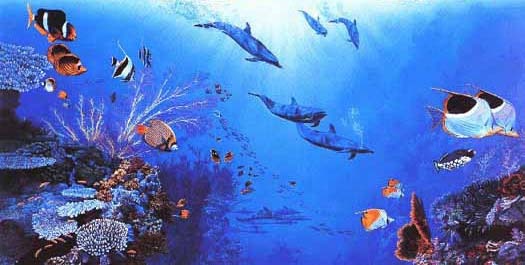
Biodiversity
The biosphere includes all of the biotic and abiotic factors of the Earth. The biotic factors are interdependant upon each other as well as upon the abiotic factors: the atmosphere, oceans, freshwater, soil, temperature and moisture.

Photo from - http://www.vub.ac.be/APNA/staff/FDG/courses/TCB.html - Courtesy of Dr. Dahdouh-Guebas Farid
Biological diversity or biodiversity (Click here to learn about biodiversity) considers the wide variety of living organisms, and is based upon their genetic diversity resulting from the process of evolution. Biodiversity includes genetic variety, species diversity and variability in communities and ecosystems. Biodiversity within an ecosystem is constantly changing. Environmental heterogeneity, that is habitat diversity, leads to species diversity. Environmental heterogeneity influences interactions among species. Natural disturbances result in environmental heterogeneity, therefore affecting biodiversity. Size of habitat and degree of isolation influence biodiversity. Particular species have more influence on specific ecosystems than others.

Photo from - http://horus.cs.nott.ac.uk/vsb/Virtschl7_3.htm
The significance of biodiversity is three-fold: biodiversity sustains environments, it provides food, clothing, medicine, fuel, and other products, and it provides clean air and drinkable water.
There are between 15 and 100 million species on Earth. The larger number is an estimate based mostly upon the unexplored diversity of microbes. An estimated two -thirds of all life on earth is microbial.
Rates of extinction are presently at the greatest levels since the evolution of man, largely due to man's activities. Click here to go to "Biodiversity Hot Spots" of the world. Environmental changes affect biodiversity and biodiversity may affect certain ecological processes.
One of the most significant aspects of biodiversity (Click here to learn more about biodiversity) is the interweaving, the interactions of organisms in symbiotic relationships. Symbiotic relationships are ecological relationships between species in which at least one member of the pair benefits.
**Button Icons from www.grsites.com**